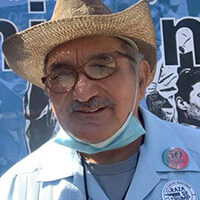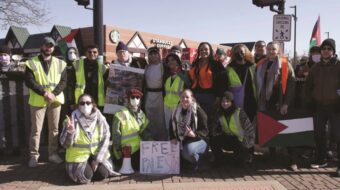The massive Aug. 29 demonstration in New York against the Bush agenda will be a historic event for our nation. For me and my generation of Chicanos, Mexican Americans, it very much brings to mind another historic Aug. 29 in 1970, when over 25,000 of us with our allies marched through the East Los Angeles barrios against the Vietnam War, in the National Chicano Moratorium.
Our march was brutally attacked by the police and people were killed, including the leading Latino journalist of that era, Ruben Salazar, just as white students at Kent State in Ohio and African American students at Jackson State in South Carolina had been attacked earlier that year. We kept on fighting after that attack, as did the student, peace and African American movements of the day, until the president who waged the war was removed from office and our military was pulled out of Vietnam.
In 2004 much more than in 1970, we are marching together, not separately, and we have the support of the people of the whole world. The kind of repression we faced in those times is not likely today, but precautions are necessary. There are other key parallels and differences that we would do well to keep in mind.
By 1970, growing numbers of U.S. people had turned against the war. But that was not enough to stop it. Much more had to be done: the draft had to be changed and stopped, the bombings opposed militantly, and not only the colleges but the high schools had to be organized. Young people began returning from the war and joining the protests. Then they began to oppose fighting while in the service and before they went in. It was only after Nixon was removed from office that the end came in sight, and even then the pressure had to continue.
Our Chicano Moratorium was different from much of the peace movement of that day in that we focused on the working class neighborhoods whose youth were dying in that war at twice the rate of the overall population. Before our Aug. 29 national mobilization we marched in the barrios of over 20 cities in the Southwest and Midwest. Today’s peace movement is rooted in neighborhoods, and the largest unions in the country have taken a stand against the Iraq war. Even so, more and bigger demonstrations are needed. A massive get out the vote effort to defeat Bush is needed in all of our neighborhoods on Nov 2. Our moratorium movement had to take on the problems of the war alongside of the overall problems of our communities. Our Chicano movement for peace addressed the issues of racism and economic justice much more than the overall peace movement did. Today’s peace movement is taking on this broader approach, but there could be greater awareness of what is at stake globally. When we oppose Bush’s military policies, Iraq is a priority, but so are Haiti, the preemptive strike doctrine, corporate globalization, global warming, use of nuclear weapons, increased military spending, global deployment of our military, weapons in space. We must oppose the draft, and the profiling of minority and poor youth for military recruitment.
One of the great strengths of our youthful movement of 1970 was that progressives of previous generations gave us tremendous support: Cesar Chavez and Dolores Huerta of the Farmworkers, and other well-known activists in our communities like Ralph Guzman, Bert Corona, Chole Alatorre, Corky Gonzalez, Polly Baca, Tony Rios, Irene Tovar, Rev. Antonio Hernandez, Fr. Juan Romero, Julia Mount, Celia Rodriguez, Esteban Torres and many more. They knew that each generation had to develop its own methods to organize for peace amongst its peers.
We had weaknesses, glaring ones. Males dominated the podium, we were unnecessarily nationalist minded and anti- or non-political. I think it would have been possible to be stronger and less vulnerable to attack if pro-peace politicians like Reps. Ed Roybal and George Brown (who donated the office space for our committee) as well as City Councilman Tom Bradley had been involved. Besides Cesar Chavez, other pro-peace unionists like Dolores Huerta and the UAW’s Paul Schrade could have been asked to speak. Such weaknesses undoubtedly still impact today’s movement, but there is much improvement.
Back in 1970 our slogan was “Raza si! Guerra no!” (Our people yes! War no!). Today it is “Raza humana si! Guerra no!” (Human race yes! War no!).
Let me re-emphasize: back then to end the war it was necessary to remove the war president. The same holds true today.
Rosalío Muñoz was chair of the Aug. 29, 1970, National Chicano Moratorium. He is currently an organizer for the Southern California district of the Communist Party USA. He can be reached at rosalio_munoz@sbcglobal.net.

MOST POPULAR TODAY

High Court essentially bans demonstrations, freedom of assembly in Deep South

Zionist organizations leading campaign to stop ceasefire resolutions in D.C. area

U.S. imperialism’s ‘ironclad’ support for Israel increases fascist danger at home


UN warns that Israel is still blocking humanitarian aid to Gaza






Comments